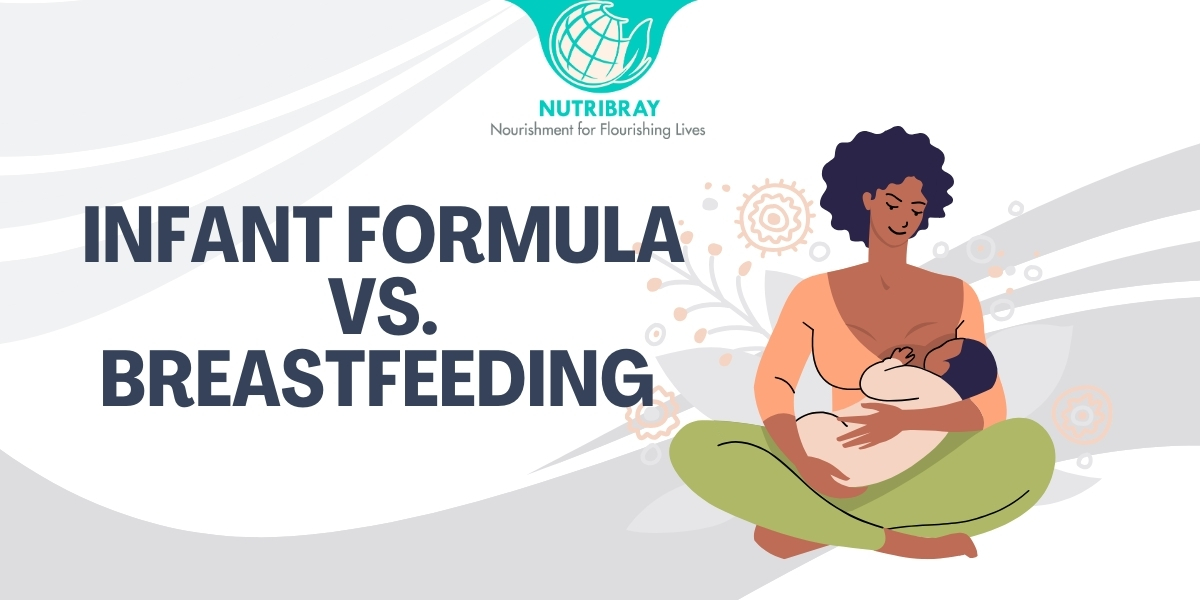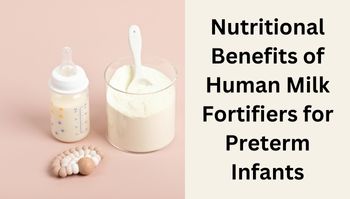The journey of introducing solid foods to your baby is an exciting milestone in their development. Among the first foods recommended for infants, cereals have traditionally held a special place. However, parents often have questions about the right timing, the best types, and the proper methods for introducing these important first foods. As infant cereals manufacturers continue to innovate with nutritionally optimized products—including growing up formulas and LBW formulas tailored for specific developmental needs—understanding the role of these cereals in your baby’s diet becomes increasingly important.
Understanding the Developmental Readiness for Solid Foods
Before introducing any solid foods, including infant cereals, it's crucial to ensure your baby is developmentally ready. While age is one factor, physical development and readiness signs are equally important considerations.
Key Signs of Readiness for Solid Foods
Most pediatricians and nutrition experts recommend looking for these developmental milestones before starting solids:
- Good head and neck control, allowing your baby to sit upright with support
- Diminished tongue-thrust reflex (the automatic pushing of food out of the mouth)
- Showing interest in food when others are eating
- Ability to transfer food from the front to the back of the mouth for swallowing
- Seeming hungry after a full day's portion of breast milk or formula
- Typically reaching around 5-6 months of age (though this varies between babies)
These signs generally emerge around 4-6 months of age for most infants, though individual development varies. The World Health Organization and many pediatric associations recommend exclusive breastfeeding for the first six months, with complementary foods being introduced around this time while continuing breastfeeding.
The Physiological Development Supporting Solid Food Introduction
Several physiological changes occur around 4-6 months that prepare babies for solids:
- Digestive enzymes necessary for processing starches and other complex nutrients begin to increase
- The gut barrier becomes more selective, reducing the risk of food allergies and sensitivities
- Kidney function matures, allowing better processing of the minerals and proteins in solid foods
- Oral motor skills develop, enabling the movement of food from the front to the back of the mouth
The Nutritional Benefits of Infant Cereals as First Foods
Baby cereals manufacturers have developed products specifically designed to meet the nutritional needs of infants transitioning to solid foods. These cereals offer several important benefits:
Iron Fortification
One of the most significant advantages of commercial infant cereals is iron fortification:
- Around 4-6 months, a baby's iron stores acquired during pregnancy begin to deplete
- Breast milk, while nutritionally optimal in many ways, contains relatively low levels of iron
- Iron-fortified infant cereals can provide up to 45% of a baby's daily iron requirement
- Adequate iron is critical for cognitive development, motor function, and overall growth
Introduction to Various Grain Textures
Quality infant cereals provide a gentle introduction to different textures:
- Beginning with single-grain, finely ground cereals allows babies to adjust to the new texture gradually
- As babies develop, multi-grain cereals introduce more complex textures
- The progression helps develop oral motor skills necessary for handling varied food consistencies
Balanced Nutrient Profile
Premium infant cereal manufacturers like Nutribray Health Care Pvt Ltd ensure their products provide a balanced nutrient profile:
- Carbohydrates for energy
- Essential vitamins including B vitamins for metabolism and development
- Minerals like zinc that support immune function and growth
- Often enriched with additional nutrients like calcium for bone development
Allergen Considerations
Single-grain cereals allow for methodical introduction of potential allergens:
- Starting with rice cereal, historically considered least allergenic
- Progressing to oat, barley, or other grains individually
- Monitoring for any adverse reactions before introducing multiple grains
Types of Infant Cereals and Their Specific Benefits
The market offers various types of infant cereals, each with specific nutritional profiles and benefits.
Rice-Based Cereals
Traditionally the first cereal introduced due to its:
- Low allergenicity profile
- Mild flavor that babies generally accept easily
- Smooth texture that's easily digestible for beginners
However, recent concerns about arsenic levels in rice have led some pediatricians to recommend varying the types of cereals offered.
Oat-Based Cereals
Gaining popularity as a first cereal choice because of:
- Natural fiber content that can help regulate digestion
- Creamier texture that many babies prefer
- Rich nutritional profile including B vitamins and minerals
- Lower likelihood of containing concerning levels of heavy metals
Multi-Grain Options
As babies grow accustomed to single grains, multi-grain cereals offer:
- Exposure to diverse nutrient profiles
- More complex flavors that help develop the palate
- Varied textures that support oral motor development
Ancient Grain Varieties
Newer to the market, these include cereals made from:
- Quinoa, providing complete protein
- Amaranth, offering higher levels of certain minerals
- Millet, which is easily digestible and nutritionally dense
- Buckwheat, which provides rutin, a beneficial flavonoid
Organic and Specialized Formulations
For parents with specific preferences:
- Organic cereals minimizing exposure to pesticides
- No-added-sugar varieties for baby-led weaning approaches
- Gluten-free options for families with celiac concerns or gluten sensitivities
Best Practices for Introducing Infant Cereals
The method of introduction can significantly impact a baby's acceptance and enjoyment of cereals.
Starting Gradually
A measured approach helps babies adjust to this new experience:
- Begin with 1-2 teaspoons of cereal mixed with breast milk or formula
- Gradually increase to 1-2 tablespoons as your baby shows interest and tolerance
- Progress to thicker consistencies as oral motor skills develop
Proper Preparation Techniques
Correct preparation ensures optimal nutrition and safety:
- Mix cereal with breast milk, formula, or water (as recommended by your pediatrician)
- Start with a thin, runny consistency and gradually thicken as your baby adapts
- Always feed cereal with a spoon, never in a bottle (unless specifically directed by a healthcare provider)
- Serve at room temperature or slightly warm, never hot
Establishing a Positive Feeding Environment
The feeding context matters as much as the food itself:
- Choose a time when your baby is alert but not overly hungry or tired
- Sit your baby upright in a high chair or supportive seat
- Model eating behaviors by taking pretend bites and showing enjoyment
- Follow your baby's cues—never force feeding if they turn away or show disinterest
Monitoring for Adverse Reactions
Careful observation helps identify any issues:
- Introduce new cereals one at a time, waiting 3-5 days before introducing another
- Watch for signs of allergic reactions such as rash, unusual fussiness, digestive changes, or breathing issues
- Note any constipation, which can sometimes occur with certain cereals, particularly rice
- Consult your pediatrician if concerning symptoms develop
Integrating Cereals into a Balanced Infant Diet
As your baby grows, cereals become one component of an increasingly diverse diet.
Complementing Breast Milk or Formula
Solid foods, including cereals, should complement, not replace, breast milk or formula during the first year:
- Milk remains the primary source of nutrition
- Cereals and other solids gradually increase in proportion as babies approach 12 months
- Follow feeding guidelines appropriate to your baby's age and development
Combining with Other First Foods
Creating nutritionally balanced meals by combining:
- Cereals with pureed fruits for natural sweetness and vitamins
- Cereal with vegetable purees for expanded nutrient profiles
- Eventually, cereal with yogurt for additional protein and probiotics (after dairy introduction is cleared by your pediatrician)
Progressive Texture Development
Advancing textures supports oral-motor development:
- Begin with smooth, liquid-like consistency
- Progress to thicker, pudding-like texture
- Eventually introduce small soft lumps as chewing skills develop
- By 9-12 months, offer finger-food versions of cereals like soft, well-cooked grain pieces
Creating Nutritionally Balanced Meals
As your baby accepts more foods, create balanced meals by:
- Combining cereals with protein sources like pureed meats or legumes
- Adding healthy fats such as avocado or olive oil to cereal mixtures
- Ensuring exposure to a rainbow of fruits and vegetables alongside grain foods
Common Questions and Concerns About Infant Cereals
Parents often have specific questions about incorporating cereals into their baby's diet.
Is Rice Cereal Still Recommended as the First Food?
Current perspectives from nutrition experts:
- Many pediatricians now recommend a variety of first foods, not necessarily starting with rice cereal
- Concerns about arsenic in rice have led to recommendations to vary grain exposure
- Iron-fortified oat cereal is often suggested as an alternative first grain
- Some approaches now begin with pureed vegetables or fruits rather than cereals
Can Cereals Help My Baby Sleep Better?
Addressing a common misconception:
- Scientific evidence does not support the claim that cereal in evening feedings improves sleep
- Adding cereal to bottles is not recommended and can pose choking hazards
- A consistent bedtime routine contributes more to sleep patterns than specific foods
- Cereals are best offered as part of regular meals, not as sleep aids
By choosing the right infant cereals, along with complementary products like infant formula, growing formulas, LBW formulas, and supplements such as MCT oil, parents can confidently support their baby’s nutritional journey—laying the foundation for healthy growth, strong immunity, and lifelong wellness.







